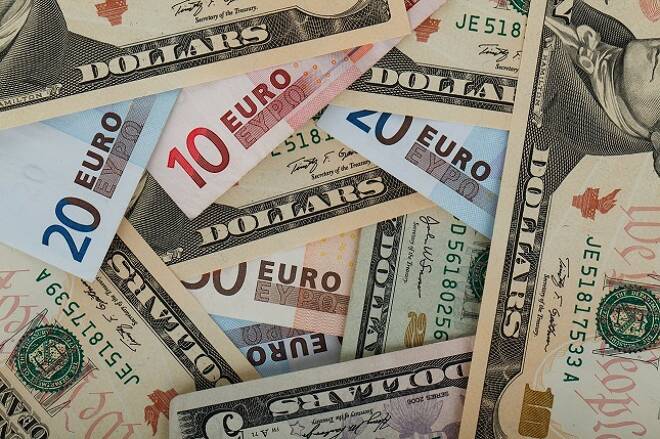Advertisement
Advertisement
Here Comes the FED and There Goes the EUR
By:
The Dollar was on the bounce through the Asian session this morning, sentiment towards the release of the FOMC meeting minutes
The Dollar was on the bounce through the Asian session this morning, sentiment towards the release of the FOMC meeting minutes later this evening driving appetite for the Dollar as the markets weigh up on the balance of power between the Hawks and the Doves.
Some initial Dollar weakness in the early part of the day came off the back of FOMC non-voting member Mester’s comments in the early hours, with one of the more hawkish members of the FOMC saying that the FED would not make any moves on rates that would be a surprise to the markets.
Mester’s comments were taken as a negative at the time, which led the Dollar Spot Index down 0.12% to an intraday low of 101.25, following Tuesday’s close, which was the highest close since mid-January, though the reality remains that barring an actual announcement by the FED Chair that the FOMC will be lifting rates in March, Yellen’s testimony and those of other voting members of the FOMC certainly suggest that the meeting will be a live one.
Going into the European session, the Dollar Spot Index had bounced 0.23% to 101.6 and, despite the weaker private sector PMI figures released on Tuesday evening, expectations are for the FOMC meeting minutes to, not only be hawkish, but to also open the door to a March rate hike. The Dollar is playing catch up as a result, the U.S administration having given the markets an alternative area of focus, the markets usually obsessed with monetary policy and little else.
As Dollar momentum continues to build, in Europe it’s a somewhat different story. Upbeat macroeconomic data out of the Eurozone on Tuesday has done little to support the EUR, the continued rise of support for populist governments within the EU being reflected in Marine Le Pen and the National Front’s increased popularity, which has become somewhat of a concern for “The Establishment” and the traditionalists. Le Pen is looking to ride on Trump’s coattails in a call for a return to the old France, but with a “New Franc.”
The negative sentiment led to the EUR easing to an intraday low of $1.04972, the EUR falling to sub-$1.05 levels for the first time since early January.
It’s certainly an interesting path for the EUR, the latest private sector PMI figures reporting a rise in both input and output price inflation, which comes off the back of the solid pick up in the Eurozone’s annual rate of inflation.
The ECB continues to discount the pickup in the rate of inflation, but at some point continued rising prices will need to be addressed and improved economy activity in key member states, together with rising inflation and a faster pace of hiring should all be considered EUR positive.
The EUR recovery from its intraday low will likely be as a result of the markets taking into account the possible need for the ECB to begin tapering the current asset purchasing program that has been extended to the end of the year. Pressure will likely remain ahead of this evening’s FOMC meeting minutes, with calls for parity likely to resume should the markets be given a green light towards a March rate hike. The latest inflation figures suggest that the FOMC doves will find it hard to hide behind the outlook on inflation.
At the time of the report, the Dollar Spot Index stood at 101.57, a gain of 0.20%, with the EUR sitting at $1.05042, down 0.30%. This morning’s release of Germany’s IFO Business Climate Index and finalized January inflation figures out of the Eurozone are unlikely to have a material impact on the EUR, the markets having largely brushed aside the positive PMI figures released out of the Eurozone on Tuesday.
About the Author
Bob Masonauthor
With over 20 years of experience in the finance industry, Bob has been managing regional teams across Europe and Asia and focusing on analytics across both corporate and financial institutions. Currently he is covering developments relating to the financial markets, including currencies, commodities, alternative asset classes, and global equities.
Did you find this article useful?
Latest news and analysis
Advertisement
